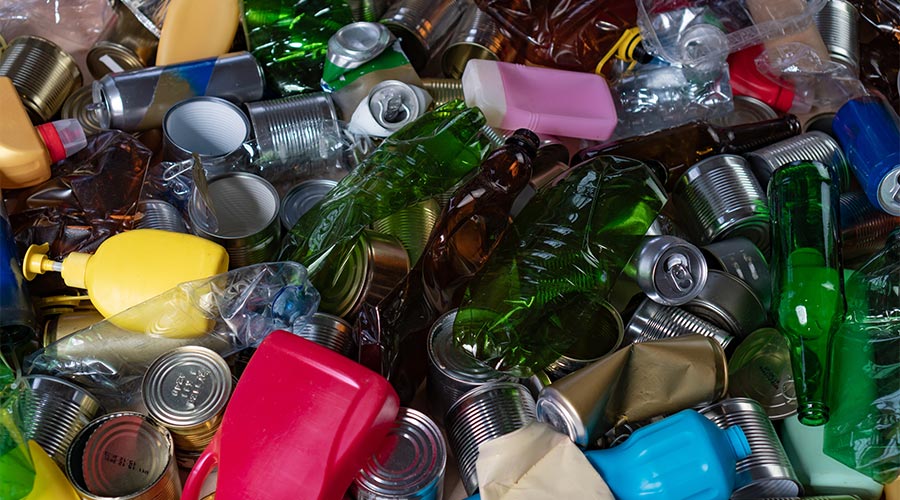
Incentive programs are also pivotal to the Chase Center’s successful work in this field, particularly when it comes to engaging students and fans in the very act of recycling. The “Recycle Rally” initiative, done in conjunction with SFUSD, rewards schools that achieve high diversion rates with Warriors game tickets or merchandise. In 2024, participating schools saw a 28 percent increase in recycling compliance, with some even achieving near-zero waste during rallies.
“Kids get excited about rewards, but the real win is the habits they build,” says Michael J. Sangiacomo, CEO of Recology. At the arena, fans who correctly sort waste during zero-waste games enter raffles for prizes, and this awareness can help significantly reduce contamination rates.
These programs all draw some inspiration from San Francisco’s “pay-as-you-throw” model, which incentivizes waste reduction. Facilities elsewhere can implement similar rewards, such as discounts, recognition, or small perks/giveaways, to encourage recycling. For example, a university could offer dining hall vouchers to students who participate in waste audits. Schools are particularly effective when it comes to incentive programs, as students tend to respond well to gamification and competition with their peers —hence the in-arena minigames. A 2024 SFUSD study found that students in incentivized programs were 50 percent more likely to teach recycling practices to family members, which can make an enormous community impact.
Technological innovations, like Chase Center’s smart bins with real-time sorting feedback, further enhance incentives. A 2024 pilot showed a 20 percent increase in accurate sorting with these bins. While such technology may be costly for facilities at the start, there are some lower-budget alternatives. Think creatively, like leaderboards recognizing top recyclers, and facilities can achieve their goals.
“Incentives make sustainability fun and immediate,” says Jue. Facilities can start with pilot programs, testing rewards in high-traffic areas, and scale up as results emerge. By engaging schools in these efforts, facilities ensure that young participants adopt recycling habits early, creating a ripple effect.
A Roadmap for Facilities
The Chase Center’s success offers a pretty clear roadmap for facility managers that are aiming to enhance sustainability through community engagement. Schools can be critical conduits, as their students are often eager and impressionable learners who can have some influence on families and peers. Managers can initiate partnerships with schools by contacting local district officials or environmental agencies (look for conservation districts, as they often have budgets for outreach but little places to spend them) and keep an eye out for places seeking resources like a hosted workshop or equipment donations.
Smartly wielding community influence, as the Warriors do, amplifies these efforts. Facilities can also identify other local partners — sports teams, businesses, or civic groups — to promote recycling through events or campaigns. A municipal building could host a “Green Day” with a local mascot, engaging residents in waste sorting challenges, featuring live music. Incentive programs, meanwhile, can help drive immediate participation. Managers can start with simple rewards, like employee recognition or student competitions, and explore technologies as budgets allow.
For facilities interested in implementing this sort of model, managers should collaborate with waste management providers to track diversion rates, as Chase Center does with Recology. Data-driven insights help refine programs, decide what is and isn’t effective, and demonstrate ROI when it comes time to talk budgets.
Community engagement also critically helps to build public goodwill and can position a facility as a sustainability leader. Once that recognition takes hold in the community, many more doors for involvement and awareness will likely open. Often, people with an interest and drive to educate about sustainability are looking for venues to share their knowledge.
“The Chase Center shows that facilities can be more than buildings — they can be community hubs for change,” says Raphael. By adapting these strategies, managers can transform their operations and inspire communities to embrace zero-waste goals.
Jackson Silvanik is the managing editor of Facility Cleaning Decisions, Contracting Profits, and Sanitary Maintenance magazines, as well as CleanLink.com.
How Chase Center’s Model Can Transform Facility Operations

 The Down and Dirty on Cleaning in Virus Season
The Down and Dirty on Cleaning in Virus Season How Surfactant Use is Expanding in Commercial Cleaning
How Surfactant Use is Expanding in Commercial Cleaning Operational Excellence Series 2025: Labor Strategies
Operational Excellence Series 2025: Labor Strategies
